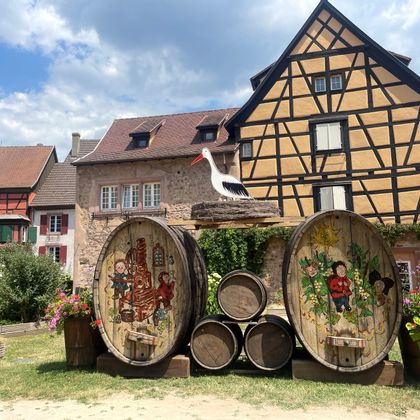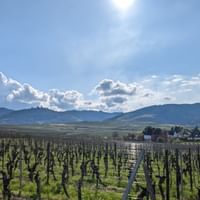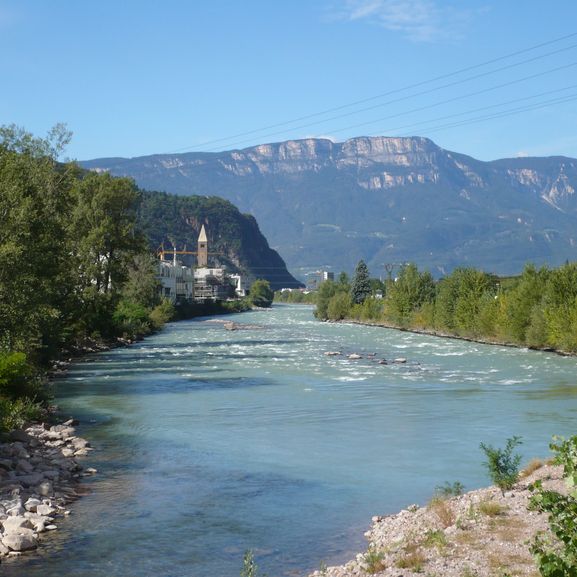Traditions and vineyards: bike tours in Alsace
Cycling vacation in Alsace
On the borders of the Latin and Germanic civilisations, Alsace, a region very proud of its identity, offers astonishing cultural wealth. A great winemaking region, its white wines are delicious accompanied with one of the numerous local specialities. A delight for the taste buds in the evening in the charming hotels which we shall reserve for you. A delight for the cyclist who will discover, as he travels along trails suitable for cycling and numerous purpose-built cycle tracks, the villages bedecked with flowers along the wine route which is overlooked by imposing medieval castles. You will also have lots of time to visit Strasbourg and Colmar.
Alsatian pleasure cycling
Hard to believe, the small Alsace is crisscrossed by three beautiful Eurovelo routes and by many, no less attractive regional and national bike routes between the Rhine plain and the Vosges. All are well signposted and run partly flat, partly hilly through the vineyards. Pure enjoyment from the bike!

Half-timbered, Renaissance and Romanesque
The first thing you will notice are the many picturesque wine villages and half-timbered houses. Whether in Obernai or in Colmar, in Riquewihr or in Ribeauvillé, everywhere you will find colorfully painted, beautifully restored half-timbered houses that tell stories. Many of them were built during the Renaissance and are decorated with richly ornamented bay windows, gables, balconies and arcades. The Maison Kammerzell in Strasbourg or the Kopfhaus in Colmar are outstanding. In addition, there are many Romanesque buildings in Alsace, such as the impressive Strasbourg Cathedral, which also contains Gothic elements and for which you should plan a good half day, or the Romanesque abbey with the church of Saints-Pierre-et-Paul in Andlau and in Sélestat the church of Saint Fides.

Alemannic, French and simply European
Alsace is also part of the Alemannic cultural area. Besides French, German and Alsatian are spoken here: Alemannic in the south of Alsace, Rhine Franconian is spoken in the northern area. The wonderful mix makes the region culturally extremely exciting. Last but not least, Alsace is also very European: Strasbourg is the seat of the European Parliament. Enjoy the French-Alsatian savoir-vivre and visit one of the numerous wine festivals along the Alsace Wine Route. Hardly a day goes by without one taking place somewhere.

Baeckeoffe and Choucroute
Alsace is known for its good cuisine. Rather hearty dishes, sauerkraut, sausages or special pastries, you will find it here. Try crispy tarte flambée, also called tarte flambée in this country: a thin flat cake spread with crème fraîche. In its classic form, it is topped with onions and bacon. Baeckeoffe is the name of the delicious Alsatian stew of cooked beef, lamb and pork with carrots, onions, potatoes, cabbage and a dash of Alsatian white wine. Choucroute, sauerkraut, is a local passion and is included in many dishes, even fish: try pike perch on Riesling sauerkraut. A poem! Of course, a glass of Alsatian wine from the grape varieties Pinot noir, Chardonnay (from which Crémant is made), Pinot blanc, Pinot gris, Muscat, Sylvaner, Riesling or Gewürztraminer goes well with all this. But there are also plenty of tasty beers from the small Alsatian microbreweries.

Wine as far as the eye can see
Alsace is first and foremost defined by the cultivated landscape of vineyards. Sometimes steep, the vineyards stretch up to the left and right of the bike paths and adorn the landscape. There are a total of 21 nature reserves ranging from the flat Rhine plain with its riparian forests and marshes, where the storks that are the mascot of Alsace like to cavort, to the towering mountains of the Vosges with intact flora and fauna.









